Charles M. Kozierok The TCP-IP Guide
Подождите немного. Документ загружается.

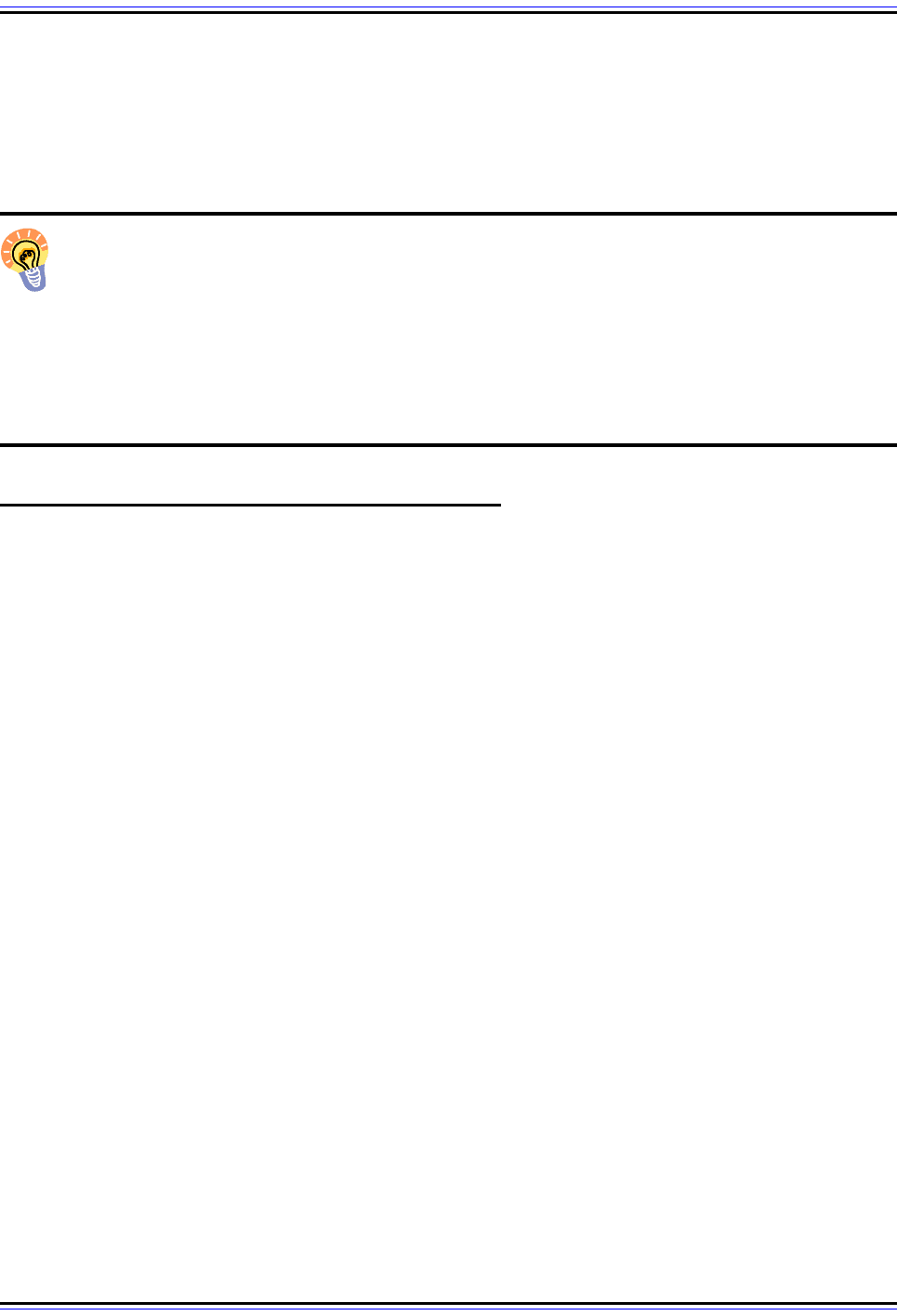
The TCP/IP Guide - Version 3.0 (Contents) ` 1481 _ © 2001-2005 Charles M. Kozierok. All Rights Reserved.
Most people today don't know UNIX and don't want to know it. They are much happier using
a fancy graphical e-mail program based on POP3 or IMAP4. However, there are still a
number of us old UNIX dinosaurs around who feel the benefits of direct access outweigh
the drawbacks. Oh, one other benefit that I forgot to mention is that it's very hard to get a
virus in e-mail when you use UNIX.
Key Concept: Instead of using a dedicated protocol like POP3 or IMAP4 to retrieve
mail, on some systems it is possible for a user to have direct server access to e-mail.
This is most commonly done on UNIX systems, where protocols like Telnet or NFS
can give a user shared access to mailboxes on a server. This is the oldest method of e-mail
access; it provides the user with the most control over his or her mailbox, and is well-suited
to those who must access mail from many locations. The main drawback is that it means
the user must be on the Internet to read e-mail, and it also usually requires familiarity with
the UNIX operating system, which few people use today.
TCP/IP World Wide Web Electronic Mail Access
I don't know about you, but I was pretty darned glad when bell bottoms went out of style…
and then, rather mortified when they came back in style a few years ago! That's the way the
world of fashion is, I suppose. And sometimes, even in networking, “what's old is new
again”. In this case, I am referring to the use of the online TCP/IP e-mail access model.
Most e-mail users like the advantages of online access, especially the ability to read mail
from a variety of different machines. What they don't care for is direct server access using
protocols like Telne t (“Tel-what?”), UNIX (“my father used to use that I think…” ☺) and non-
intuitive, character-based e-mail programs. They want online access but they want it to be
simple and easy to use.
In the 1990s, the World Wide Web was developed and grew in popularity very rapidly, due
in large part to its ease of use. Millions of people became accustomed to firing up a Web
browser to perform a variety of different tasks, to the point where using the Web became
almost “second nature”. It didn't take very long before someone figured out that using the
Web would be a natural way of providing easy access to e-mail on a server. This is now
sometimes called Webmail.
How Web-Based E-Mail Works
This technique is straight-forward: it exploits the flexibility of the Hypertext Transfer Protocol
(HTTP) to informally “tunnel” e-mail from a mailbox server to the client. A Web browser
(client) is opened and given a URL for a special Web server document that accesses the
user's mailbox. The Web server reads information from the mailbox and sends it to the Web
browser, where it is displayed to the user.
This method uses the online access model like direct server access, because requests
must be sent to the Web server, and this requires the user to be online. The mail also
remains on the server as when NFS or Telnet are used.
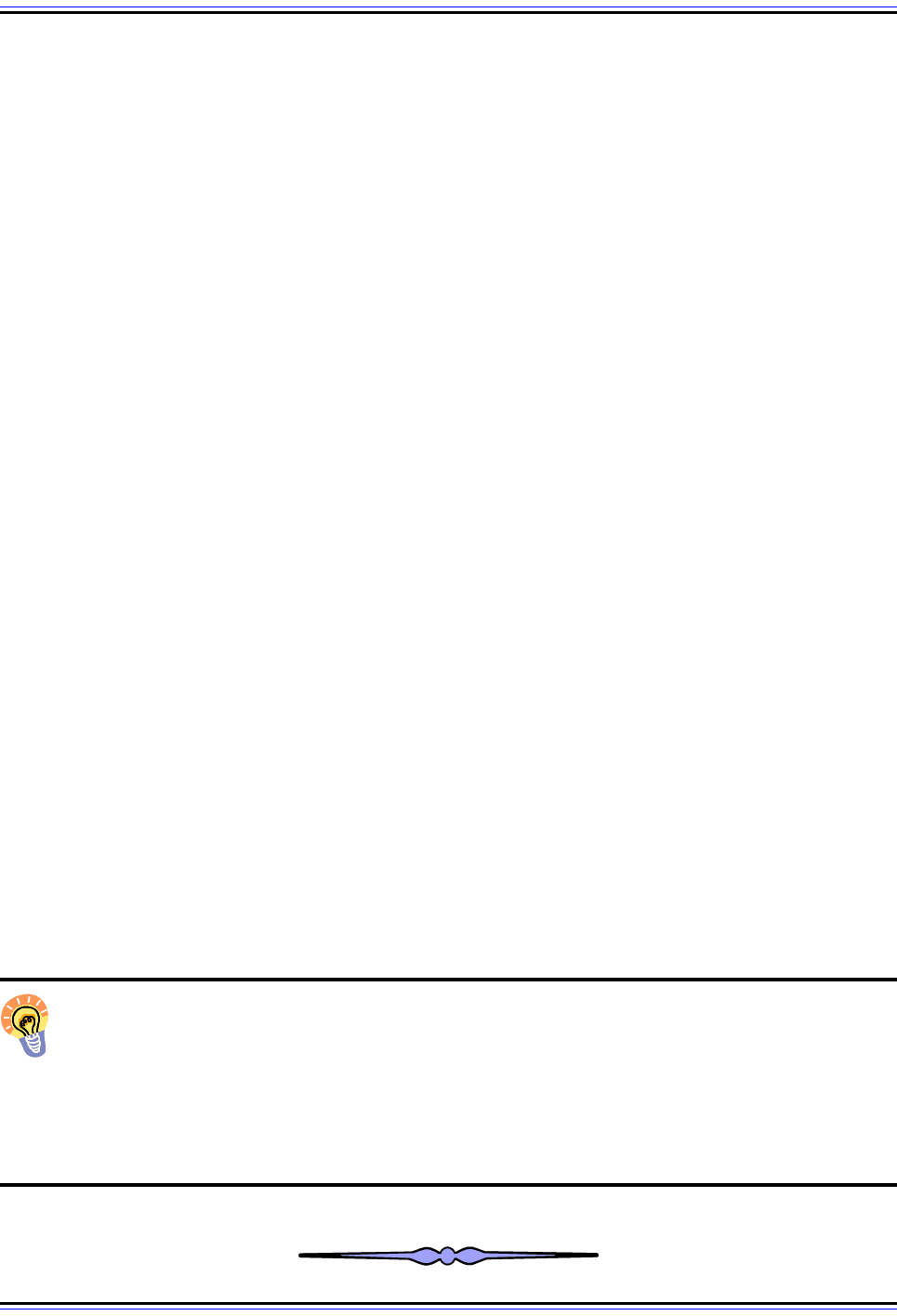
The TCP/IP Guide - Version 3.0 (Contents) ` 1482 _ © 2001-2005 Charles M. Kozierok. All Rights Reserved.
Pros and Cons of Web-Based E-Mail Access
The big difference between Web-based mail and the UNIX methods is that the former is
much easier for non-experts to use. Since the idea was first developed, many companies
have jumped on the Web-mail bandwagon, and the number of people using this technique
has exploded into the millions in just a few years. Many free services even popped up in the
late 1990s as part of the “dot com bubble”, allowing any Internet user to send and receive e-
mail using the Web at no charge (except perhaps for tolerating advertising). Many Internet
Service Providers (ISPs) now offer Web access as an option in additional to conventional
POP/IMAP access, which is useful for those who travel. Google’s new Gmail service is the
latest entrant into the sweepstakes, offering users 1 GB of e-mail storage in exchange for
viewing Google’s text ads on their site.
There are drawbacks to the technique, however, which as you might imagine are directly
related to its advantages. Web-based mail is easy to use, but inflexible; the user does not
have direct access to his or her mailbox, and can only use whatever features the provider's
Web site implements. For example, suppose the user wants to search for a particular string
in his or her mailbox; this requires that the Web interface provide this function. If it doesn't,
the user is out of luck.
Web-based mail also has a disadvantage that is an issue for some people: performance.
Using conventional UNIX direct access, it is easy to quickly read through a mailbox; the
same is true of access using POP3, once the mail is downloaded. In contrast, Web-based
mail services mean each request requires another HTTP request/response cycle. The fact
that many Web-based services are free often means server overload that exacerbates the
speed issue.
Note that when Web-based mail is combined with other methods such as POP3, care must
be taken to avoid strange results. If the Web interface doesn't provide all the features of the
conventional e-mail client, certain changes made by the client may not show up when Web-
based access is used. Also, mail retrieval using POP3 by default removes the mail from the
server. If you use POP3 to read your mailbox and then later try to use the Web to access
those messages from elsewhere, you will find that the mail is “gone”—it's on the client
machine where you used the POP3 client. Many e-mail client programs now allow you to
specify that you want the mail left on the server after retrieving it using POP3.
Key Concept: In the last few years a new method has been developed to allow e-
mail access using the World Wide Web (WWW). This technique is growing in
popularity rapidly, because it provides many of the benefits of direct server access,
such as the ability to receive e-mail anywhere around the world, while being much simpler
and easier than the older methods of direct access such as making a Telnet connection to a
server. WWW-based e-mail can in some cases be used in combination with other methods
or protocols, such as POP3, giving users great flexibility in how they read their mail.
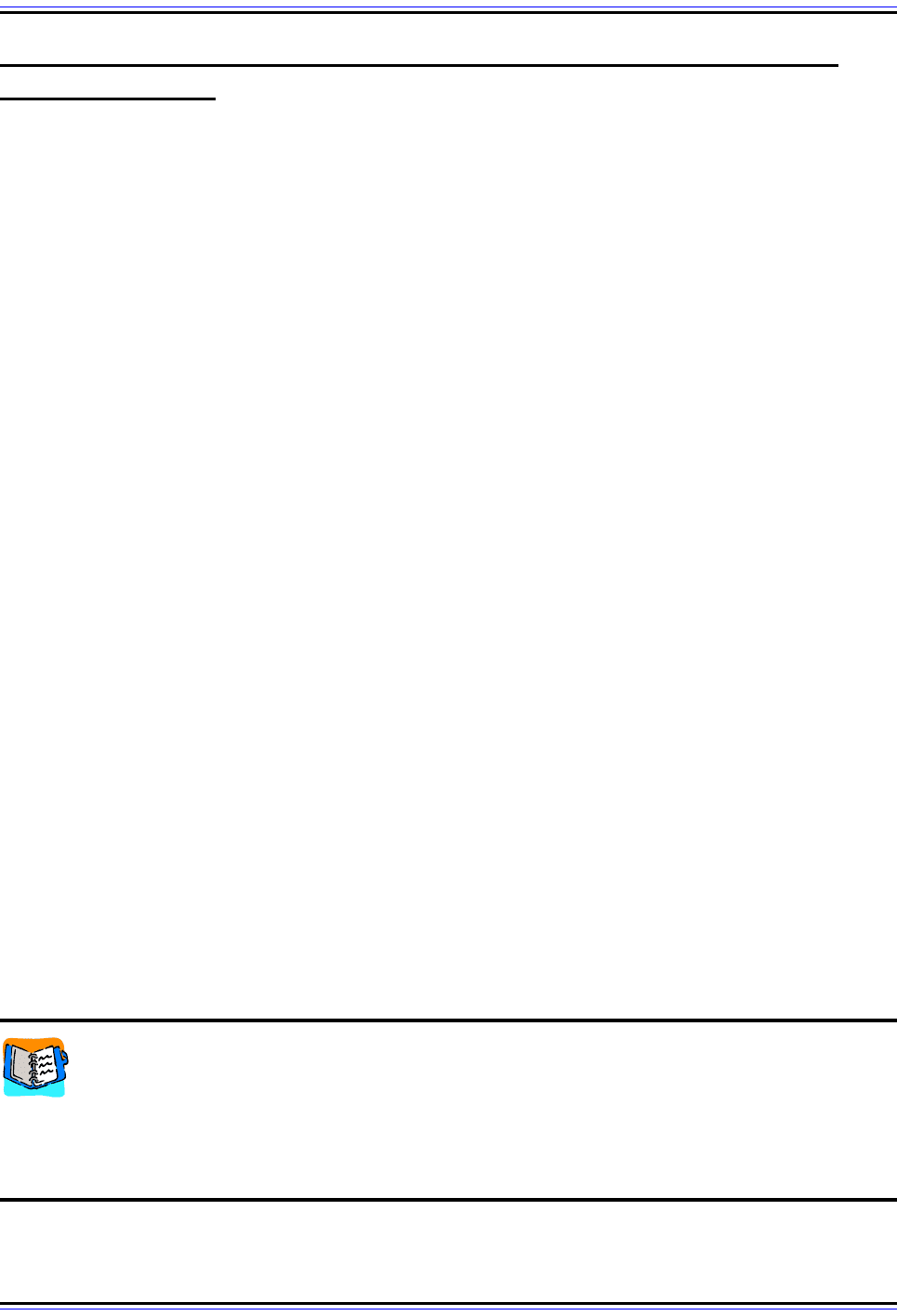
The TCP/IP Guide - Version 3.0 (Contents) ` 1483 _ © 2001-2005 Charles M. Kozierok. All Rights Reserved.
Usenet (Network News) and the TCP/IP Network News Transfer
Protocol (NNTP)
Electronic mail is one of the “stalwarts” of message transfer on the modern Internet, but is
really designed only for communication within a relatively small group of specific users.
There are many situations in which e-mail is not ideally suited, such as when information
needs to be shared amongst a large number of participants, not all of whom may neces-
sarily even know each other. One classic example of this is sharing news; the person
providing news often wants to make it generally available to anyone who is interested,
rather than specifying a particular set of recipients.
For distributing news and other types of general information over internetworks, a
messaging system called both Usenet (for user's network) and Network News was created.
This application is like e-mail in allowing messages to be written and read by large numbers
of users. However, it is designed using a very different model than e-mail, focused on public
sharing and feedback. In Usenet, anyone can write a message that can be read by any
number of recipients, and can likewise respond to messages written by others. Usenet was
one of the first widely-deployed internetwork-based group communication applications, and
has grown into one of the largest online communities in the world, used by millions of
people for sharing information, asking questions and discussing thousands of different
topics.
In this section I describe Usenet in detail, discussing in two subsections how it is used and
how it works. The first subsection covers Usenet in general terms, discussing its history and
the model it uses for communication and message storage and formatting. The second
describes the Network News Transfer Protocol (NNTP), the protocol currently used widely
to implement Usenet communication in TCP/IP.
Many people often equate the Usenet system as a whole with the NNTP protocol that is
used to carry Usenet messages on the Internet. They are not the same however; Usenet
predates NNTP, which is simply a protocol for conveying Usenet messages. Usenet old-
timers will be quick to point this out, if you try to say Usenet and NNTP are the same on
Usenet itself. ☺ This is one of the reasons why I have separated my discussion into two
subsections. In the overview of Usenet I do briefly discuss the methods other than NNTP
that have been used in the past to move Usenet messages, but since they are not widely
used today I do not place a great deal of emphasis on them.
Background Information: There are several aspects of how Usenet works that
are closely related to the standards and techniques used for e-mail. I assume in
this section that you have basic familiarity with how e-mail works. If you have not
read the section on e-mail, please at least review the overview of the e-mail system, and
also read the section on the e-mail message format, since Usenet messages are based
directly on the RFC 822 e-mail message standard.
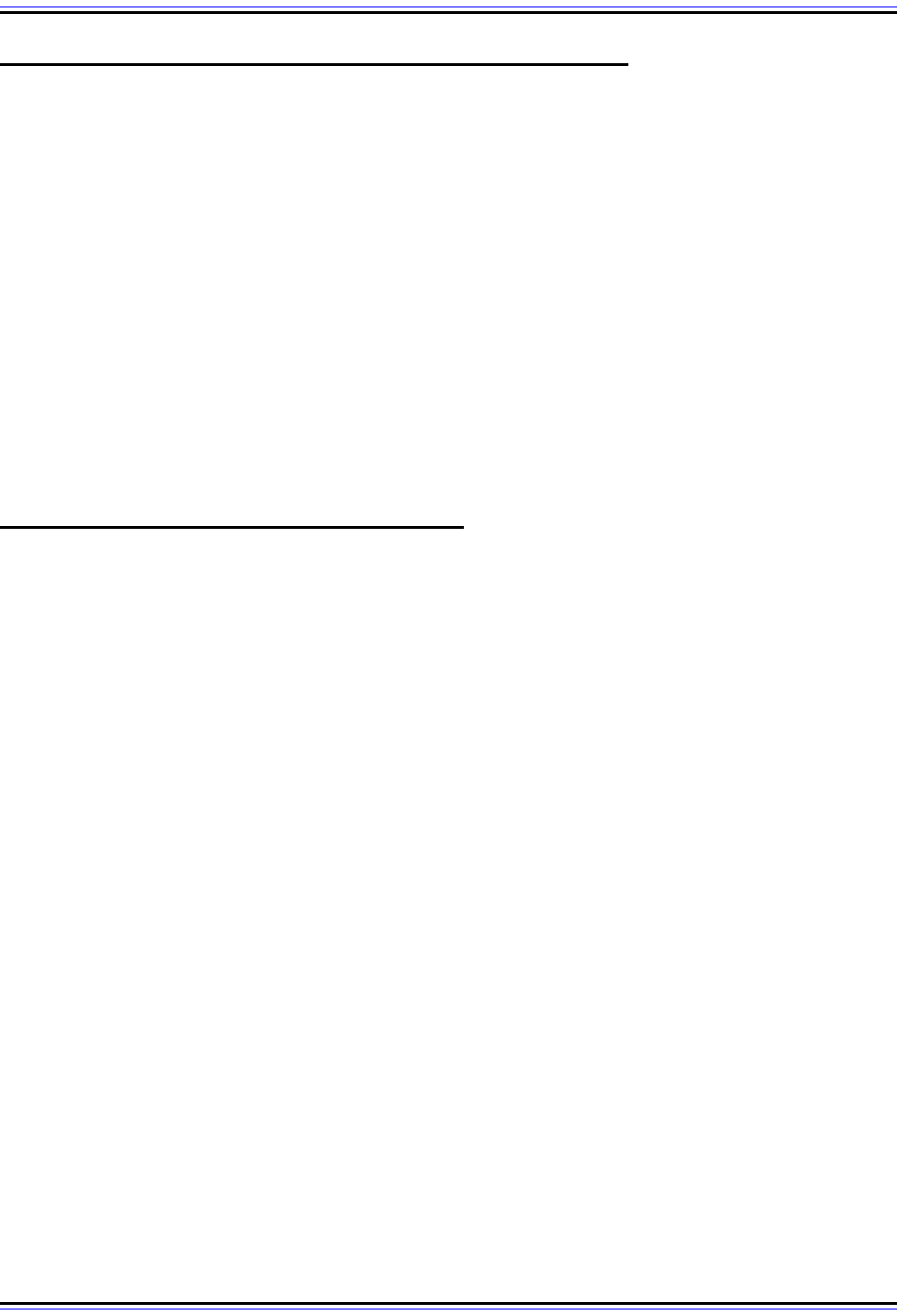
The TCP/IP Guide - Version 3.0 (Contents) ` 1484 _ © 2001-2005 Charles M. Kozierok. All Rights Reserved.
Usenet Overview, Concepts and General Operation
Where electronic mail is the modern equivalent of the hand-written letter or the inter-office
memo, Usenet is the updated version of the company newsletter, the cafeteria bulletin
board, the coffee break chat, and the water cooler gossip session, all rolled into one.
Spread worldwide over the Internet, Usenet newsgroup messages provide a means for
people with common interests to form online communities, to discuss happenings, solve
problems, and provide support to each other—as well as facilitating plain old socializing and
entertainment.
In this section I discuss Usenet as a whole and how it operates. I begin with an overview
and history of Usenet. I then provide a high-level look at the model of communication
employed by Usenet, discussing how messages are created, propagated, stored and read.
I discuss the Usenet addressing mechanism, which takes the form of a hierarchical set of
newsgroups. I also explain how Usenet messages are formatted and discuss the special
headers that provide information about a message and control how it is displayed and
communicated.
Usenet Overview, History and Standards
We are by nature both highly social and creative animals, and as a result, are always
finding new ways to communicate. It did not take long after computers were first connected
together for it to be recognized that those interconnections provided the means to link
together people as well. The desire to use computers to create an online community led to
the creation of Usenet over two decades ago.
History of Usenet
Like almost everything associated with networking, Usenet had very humble beginnings. In
1979, Tom Truscott was a student at Duke University in North Carolina, and spent the
summer as an intern at Bell Laboratories, the place where the UNIX operating system was
born. He enjoyed the experience so much that when he returned to school that autumn, he
missed the intensive UNIX environment at Bell Labs. He used the Unix-to-Unix Copy
Protocol (UUCP) to send information from his local machine to other machines and vice-
versa, including establishing electronic connectivity back to Bell Labs.
Building on this idea, Truscott and a fellow Duke student, Jim Ellis, teamed up with other
UNIX enthusiasts at Duke and the nearby University of North Carolina at Chapel Hill, to
develop the idea of an online community. The goal was to create a system where students
could use UNIX to write and read messages, to allow them to obtain both technical help and
maintain social contacts. The system was designed based on an analogy to an online
newsletter that was open to all users of a connected system. To share information,
messages were posted to newsgroups, where any user could access the messages to read
them and respond to them as well.
The early work at Duke and UNC Chapel Hill resulted in the development of both the initial
message format and the software for the earliest versions of this system, which became
known both as Network News (Net News) and Usenet (a contraction of User's network). At

The TCP/IP Guide - Version 3.0 (Contents) ` 1485 _ © 2001-2005 Charles M. Kozierok. All Rights Reserved.
first, the system had just two computers, sharing messages posted in a pair of different
newsgroups. The value of the system was immediately recognized, however, and soon
many new sites were added to the system. These sites were arranged in a structure to
allow messages to be efficiently passed using direct UUCP connections. The software used
for passing news articles also continued to evolve and become more capable, as did the
software for reading and writing articles.
The newsgroups themselves also changed over time. Many new newsgroups were created,
and a hierarchical structure defined to help keep the newsgroups organized in a meaningful
way. As more sites and users joined Usenet, more areas of interest were identified. Today
there are a staggering number of Usenet newsgroups: over 100,000. While many of these
groups are not used, there are many thousands of active ones that discuss nearly every
topic imaginable, from space exploration, to cooking, to biochemistry, to PC trouble-
shooting, to raising horses. There are also regional newsgroups devoted to particular areas;
for example, there is a set of newsgroups for discussing events in Canada; another for
discussing happenings in the New York area, and so on.
Overview of Usenet Operation and Characteristics
Usenet begins with a user writing a message to be distributed. After the message is posted
to say, the group on TCP/IP networking, it is stored on that user's local news server, and
special software sends copies of it to other connected news servers. The message
eventually propagates around the world, where anyone who chooses to read the TCP/IP
networking newsgroup can see the message.
The real power of Usenet is that after reading a message, any user can respond to it on the
same newsgroup. Like the original message, the reply will propagate to each connected
system, including the one used by the author of the original message. This makes Usenet
very useful for sharing information about recent happenings, for social discussions, and
especially for receiving assistance about problems, such as resolving technical glitches or
getting help with a diet program.
What is particularly interesting about Usenet is that it is not a formalized system in any way,
and is not based on any formally defined standards. It is a classic example of the devel-
opment of a system in an entirely “ad hoc” manner; the software was created, people
started using it, the software was refined, and things just took off from there. Certain
standards have been written to codify how Usenet works—such as RFC 1036, which
describes the Usenet message format—but these serve more as historical documents than
as prescriptive standards.
There is likewise no “central authority” that is responsible for Usenet's operation, even
though new users often think there is one. Unlike a dial-up bulletin board system or Web-
based forum, Usenet works simply by virtue of cooperation between sites; there is no
“manager in charge”. Usenet is for this reason sometimes called an “anarchy”, but this is
not accurate. It isn't the case that there are no rules, only that it is the managers of partici-
pating systems that make policy decisions such as what newsgroups to support. There are
also certain “dictatorial” aspects of the system, in that only certain people (usually system

The TCP/IP Guide - Version 3.0 (Contents) ` 1486 _ © 2001-2005 Charles M. Kozierok. All Rights Reserved.
administrators) can decide whether to create some kinds of new newsgroups. The system
also has “socialistic” elements in that machine owners are expected to share messages
with each other. So the simplified political labels really don't apply to Usenet at all.
Every community has a culture, and the same is true of online communities, including
Usenet. There is an overall culture that prescribes acceptable behavior on Usenet, and also
thousands of newsgroup-specific “cultures” in Usenet, each of which has evolved through
the writings of thousands of participants over the years. There are even newsgroups
devoted to explaining how Usenet itself operates, where you can learn about newbies (new
users), netiquette (rules of etiquette for posting messages) and related subjects.
Usenet Transport Methods
As I said earlier, Usenet messages were originally transported using UUCP, which was
created to let UNIX systems communicate directly, usually using telephone lines. For many
years, all Usenet messages were simply sent from machine to machine using computerized
telephone calls (just as e-mail once was). Each computer joining the network would connect
to one already on Usenet and receive a feed of messages from it periodically; the owner of
that computer had in turn to agree to provide messages to other computers.
Once TCP/IP was developed in the 1980s and the Internet grew to a substantial size and
scope, it made sense to start using it to carry Usenet messages rather than UUCP. The
Network News Transfer Protocol (NNTP) was developed specifically to describe the
mechanism for communicating Usenet messages over TCP. It was formally defined in RFC
977, published in 1986, with NNTP extensions described in RFC 2980, October 2000.
For many years Usenet was carried using both NNTP and UUCP, but NNTP is now the
mechanism used for the vast majority of Usenet traffic, and for this reason is the primary
focus of my Usenet discussion in this Guide. NNTP is employed not only to distribute
Usenet articles to various servers, but also for other client actions such as posting and
reading messages. It is thus used for most of the steps in Usenet message communication.
It is because of the critical role of NNTP and the Internet in carrying messages in today’s
Usenet that the concepts are often confused. It's essential to remember, however, that
Usenet does not refer to any type of physical network or internetworking technology; rather,
it is a logical network of users. That logical network has evolved from UUCP data transfers
to NNTP and TCP/IP, but Usenet itself is the same.
Today, Usenet faces “competition” from many other group messaging applications and
protocols, including Web-based bulletin board systems and chat rooms. After a quarter of a
century, however, Usenet has established itself and is used by millions of people every day.
While to some, the primarily text-based medium seems archaic, it is a mainstay of global
group communication and likely to continue to be so for many years to come.
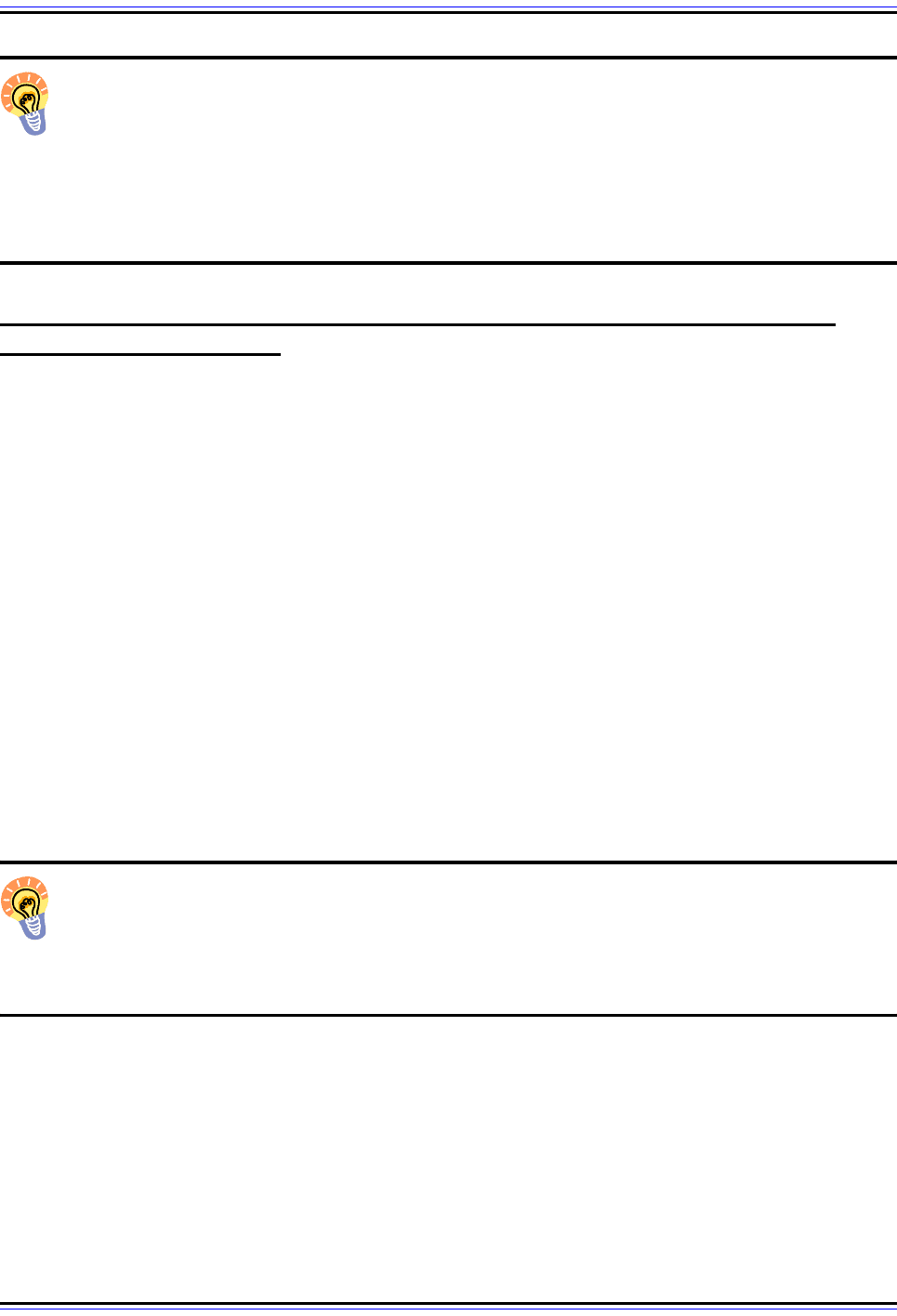
The TCP/IP Guide - Version 3.0 (Contents) ` 1487 _ © 2001-2005 Charles M. Kozierok. All Rights Reserved.
Key Concept: One of the very first online electronic communities was set up in 1979
by university students who wanted to keep in touch and share news and other infor-
mation. Today, this User’s Network (Usenet), also called Network News, has grown
into a logical network that spans the globe. By posting messages to a Usenet newsgroup,
people can share information on a variety of subjects of interest. Usenet was originally
implemented in the form of direct connections established between participating hosts;
today the Internet is the vehicle for message transport
Usenet Communication Model: Message Composition, Posting, Storage,
Propagation and Access
When the students at Duke University decided to create their online community, electronic
mail was already in wide use, and there were many mailing lists in operation as well. E-mail
was usually transported using UUCP during these pre-Internet days, the same method that
Usenet was designed to employ. The obvious question then was, why not simply use e-mail
to communicate between sites?
The main reason is that e-mail is not really designed to facilitate the creation of an online
community where information can be easily shared in a group. The main issue with e-mail
in this respect is that only the individuals who are specified as recipients of a message can
read it. There is no facility whereby someone can write a message and put it in an open
place where anybody who wants can read it, analogous to posting a newsletter in a public
place.
Another problem with e-mail in large groups is related to efficiency: if you put 1,000 people
on a mailing list, each message sent to that list must be duplicated and delivered 1,000
times. Early networks were limited in bandwidth and resources; using e-mail for wide-scale
group communication was possible, but far from ideal.
Key Concept: While electronic mail can be used for group communications, it has
two important limitations. First, a message must be specifically addressed to each
recipient, making public messaging impossible. Second, each recipient requires
delivery of a separate copy of the message, so sending a message to many recipients
means the use of a large amount of resources.
Usenet's Public Distribution Orientation
To avoid the problems of using e-mail for group messaging, Usenet was designed using a
rather different communication and message-handling model than e-mail. The defining
difference between the Usenet communication model and that used for e-mail is that
Usenet message handling is oriented around the concept of public distribution, rather than
private delivery to an individual user. This affects every aspect of how Usenet communi-
cation works:

The TCP/IP Guide - Version 3.0 (Contents) ` 1488 _ © 2001-2005 Charles M. Kozierok. All Rights Reserved.
☯ Addressing: Messages are not addressed from a sender to any particular recipient or
set of recipients, but rather to a group, which is identified with a newsgroup name.
☯ Storage: Messages are not stored in individual mailboxes but in a central location on a
server, where any user of the server can access them.
☯ Delivery: Messages are not conveyed from the sender's system to the recipient's
system, but are rather spread over the Internet to all connected systems so anyone
can read them.
The Usenet Communication Process
To help illustrate in more detail how Usenet communication works, let's take a look at the
steps involved in the writing, transmission and reading of a typical Usenet message (also
called an article—the terms are used interchangeably). Let's suppose the process begins
with a user, Ellen, posting a request for help with a sick horse to the newsgroup misc.rural.
Since she is posting the message, she would be known as the message poster. Simplified,
the steps in the process (illustrated in Figure 310) are as follows:
1. Article Composition: Ellen begins by creating a Usenet article, which is structured
according to the special message format required by Usenet. This message is similar
to an electronic mail message in that it has a header and a body. The body contains
the actual message to be sent, while the header contains header lines that describe
the message and control how it is delivered. For example, one important header line
specifies which newsgroup(s) for which the article is intended.
2. Article Posting and Local Storage: After completing her article, Ellen submits the
article to Usenet, a process called posting. A client software program on Ellen's
computer transmits Ellen's message to her local Usenet server. The message is stored
in an appropriate file storage area on that server. It is now immediately available to all
other users of that server who decide to read misc.rural.
3. Article Propagation: At this point, Ellen's local server is the only one that has a copy
of her message. The article must be sent to other sites, a process called distribution,
or more commonly, propagation. Ellen's message would travel from her local Usenet
server to other servers to which her server directly connects. It would then in turn
propagate from those servers to others they connect to, and so on, until all Usenet
servers that want it have a copy of the message.
4. Article Access and Retrieval: Since Usenet articles are stored on central servers, in
order to read them they must be accessed on the server. This is done using a Usenet
newsreader program. For example, some other reader of misc.rural named Jane might
access that group and find Ellen's message. If Jane was able to help Ellen she could
reply to Ellen by posting an article of her own. This would then propagate back to
Ellen's server, where she could read it and reply in turn. Of course, all other readers of
misc.rural could jump in to the conversation at any time as well, which is what makes
Usenet so useful for group communication.
Message Propagation and Server Organization
Propagation is definitely the most complex part of the Usenet communication process. In
the “olden dayse”, UUCP was used for propagation; each Usenet server would be
programmed to regularly dial up another server and give it all new articles it had received
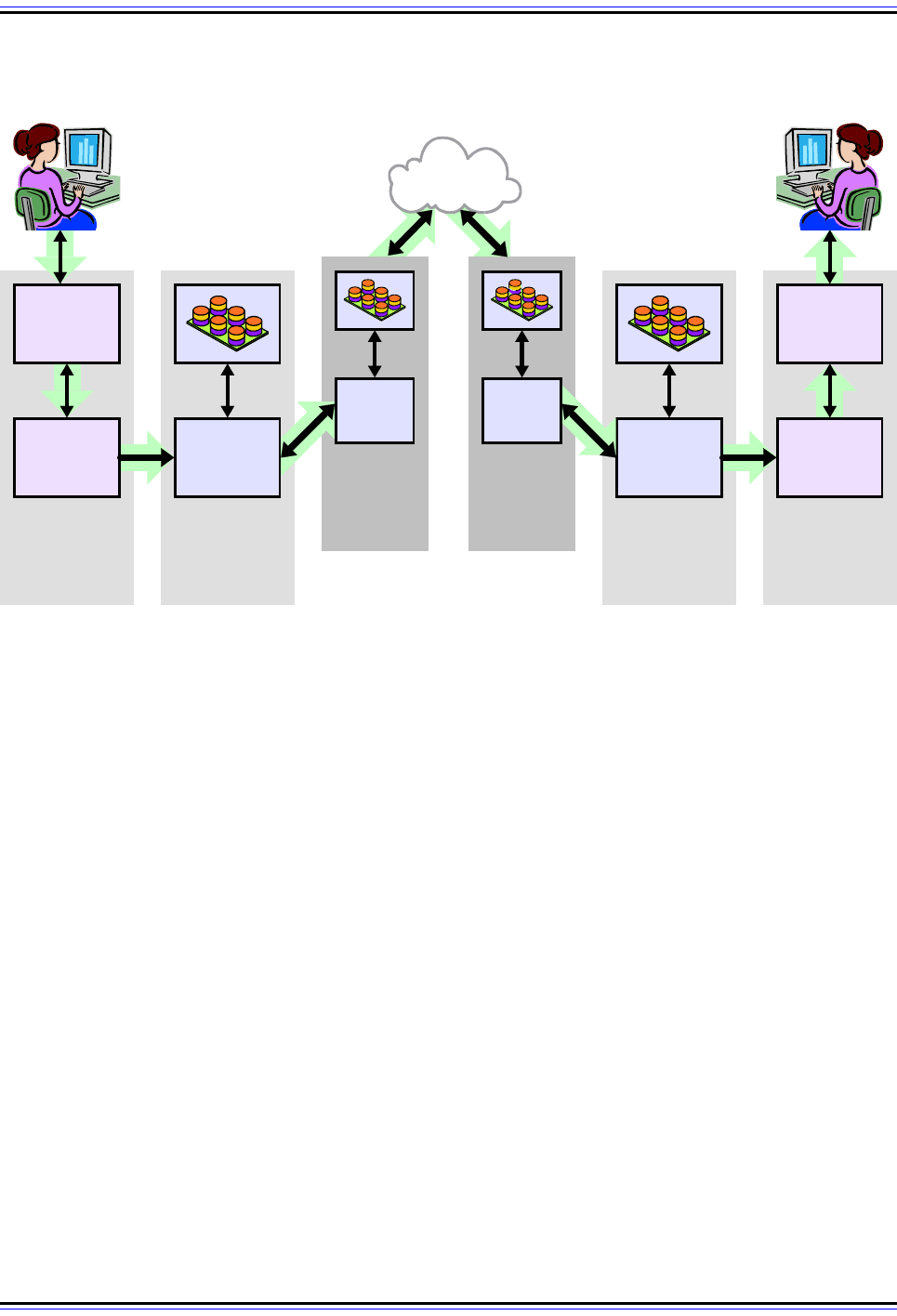
The TCP/IP Guide - Version 3.0 (Contents) ` 1489 _ © 2001-2005 Charles M. Kozierok. All Rights Reserved.
since the last connection. Articles would flood across Usenet from one server to another.
This was time-consuming and inefficient, however, and only worked because the volume of
articles was relatively small.
In modern Usenet, the Network News Transfer Protocol (NNTP) is used for all stages of
transporting messages between devices. Articles are posted using an NNTP connection
between a client machine and a local server, which then uses the same protocol to
propagate the articles to other adjacent NNTP servers. NNTP is also used by client
newsreader software to retrieve messages from a server.
NNTP servers are usually arranged in a hierarchy of sorts, with the largest and fastest
servers providing service to smaller servers “downstream” from them. Depending on how
the connections are arranged, an NNTP server may either establish a connection to
Figure 310: Usenet (Network News) Communication Model
This figure illustrates the method by which messages are created, propagated and read using NNTP on
modern Usenet; it is similar in some respects to the e-mail model diagram of Figure 301. In this example a
message is created by the poster, Ellen, and read by a reader, Jane. The process begins with Ellen creating a
message in an editor and posting it. Her NNTP client sends it to her local NNTP server. It is then propagated
from that local server to adjacent servers, usually including its upstream server, which is used to send the
message around the Internet. Other NNTP servers receive the message, including the one upstream from
Jane’s local server. It passes the message to Jane’s local server, and Jane accesses and reads the message
using an NNTP client.
Jane could respond to the message, in which case the same process would repeat, but going in the opposite
direction, back to Ellen (and of course, also back to thousands of other readers, not shown here.)
Poster's
Client
Usenet
Reader/
Editor
NNTP
Client
Poster
(Ellen)
Poster's
NNTP
Server
NNTP
Server
Reader
(Jane)
Internet
Reader's
Client
Usenet
Reader/
Editor
NNTP
Client
Reader's
NNTP
Server
NNTP
Server
Upstream
NNTP
Server
NNTP
Server
Upstream
NNTP
Server
NNTP
Server
...
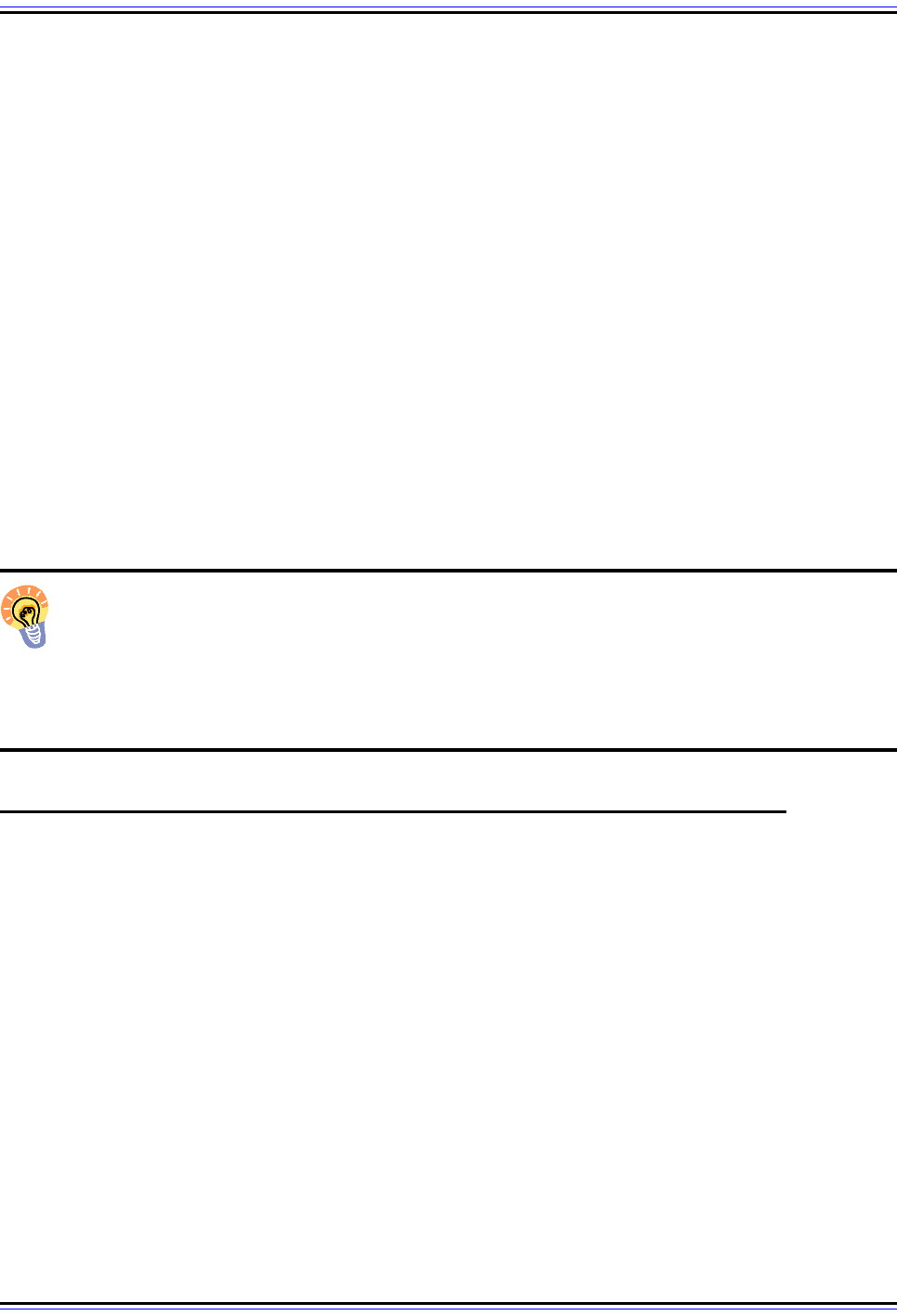
The TCP/IP Guide - Version 3.0 (Contents) ` 1490 _ © 2001-2005 Charles M. Kozierok. All Rights Reserved.
immediately send a newly-posted article to an “upstream” server for distribution to the rest
of Usenet, or the server may passively wait for a connection from the upstream server to
ask if there are any new articles to be sent. With the speed of the modern Internet, it
typically takes only a few minutes or even seconds for articles to propagate from one server
to another, even across continents.
It is also possible to restrict the propagation of a Usenet message, a technique often used
for discussions that are only of relevance in certain regions or on certain systems.
Discussing rural issues such as horses is of general interest, and Ellen might well find her
help anywhere around the world, so global propagation of her message makes sense.
However, if Ellen lived in the Boston area and was interested in knowing the location of a
good local steak-house, posting a query to ne.food (New England food discussions) with
only local distribution would make more sense. There are also companies that use Usenet
to provide “in-house” newsgroups that are not propagated off the local server at all. Note,
however, that because so many news providers are now national or international, limiting
the distribution of messages has largely fallen out of practice.
This is, of course, only a simplified look at Usenet communication. The section on NNTP
provides more details, especially on how articles are handled and propagated.
Key Concept: Usenet communication consists of four basic steps. A message is first
composed and then posted to the originator’s local server. The third step is propa-
gation, where the message is transmitted from its original server to others on the
Usenet system. The last step in the process is article retrieval, where other members of the
newsgroup access and read the article. The Network News Transfer Protocol (NNTP) is the
technology used for moving Usenet articles from one host to the next.
Usenet Addressing: Newsgroups, Newsgroup Hierarchies and Types
As the previous topic mentioned, a key concept in Usenet communication is the newsgroup.
Newsgroups are in fact the addressing mechanism for Usenet, and sending a Usenet article
to a newsgroup is equivalent to sending e-mail to an electronic mail address. Newsgroups
are analogous to other group communication venues such as mailing lists, chat rooms,
Internet Relay Chat channels or BBS forums—though calling a newsgroup a “list”, “room”,
“channel” or “BBS” is likely to elicit a negative reaction from Usenet old-timers.
Like any addressing mechanism, newsgroups must be uniquely identifiable. Each
newsgroup has a newsgroup name that describes what the topic of the newsgroup is about,
and differentiates it from other newsgroups. Since there are many thousands of different
newsgroups, they are arranged into sets called hierarchies. Each hierarchy contains a tree
structure of related newsgroups.
